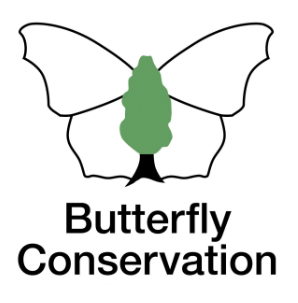Brown Argus
Brown Hairstreak
Chalkhill Blue
Clouded Yellow
Comma
Common Blue
Dark Green Fritillary
Dingy Skipper
Essex Skipper
Gatekeeper
Green Hairstreak
Green-veined White
Grizzled Skipper
Holly Blue
Large Skipper
Large White
Marbled White
Meadow Brown
Orange-tip
Painted Lady
Peacock
Purple Emperor
Purple Hairstreak
Red Admiral
Ringlet
Silver-washed Fritillary
Small Blue
Small Copper
Small Heath
Small Skipper
Small Tortoiseshell
Small White
Speckled Wood
Wall
White Admiral
White-letter Hairstreak
Extinct/rare immigrants
Wall
Lasiommata megera
General Distribution and Status
The Wall is decling and is found primarily on coastal sites. It used to occur throughout England, Wales and south Scotland. In the past the butterfly has endured major fluctuations and there are signs that it has been spreading slowly inland in the last few years. Many theories have been put forward on the reason for the decline and one likely explanation is the failure of third-generation larvae to survive the winter in inland areas. Climate change in the last few decades has facilitated production of more third-generation specimens. Another possible reason is the application of neonicotinoid pesticides on farmland but the chemicals can be absorbed by wildflowers in field margins and have a negative impact on insects including butterflies (Gilburn et al.). However, I believe the contraction in the range of the butterfly started before widespread use of the neonicotinoids. Since the 1970s range has contracted by more than half and abundance at monitored sites has crashed by 88% by 2015 (Brereton et al., Fox et al., 2015). In Hertfordshire and Middlesex, the butterfly became extinct in around 2005 with the last known colony at Highdown.
| United Kingdom | Herts & Middx | |||
| Distribution | 1976-2019 | -87% | 1980-2015 | n/a |
| Average 10-year trend | -31% | 2006-2015 | n/a | |
| 2015-19 since 2010-14 | n/a | |||
| Abundance | 1976-2024 | -84% | 1980-2015 | n/a |
| 2015-2024 | +46% | 2006-2015 | n/a | |
| 2023-2024 | -2 | 2015-19 since 2010-14 | n/a | |
UK distribution map
UKBMS Species summary
Habitat Requirements
This species is a sun-loving butterfly inhabiting open areas of disturbed grassland, sunny woodland clearings and abandoned quarries. On the coast, dunes and undercliffs are the preferred habitats.
Larval Foodplants
Yorkshire Fog Holcus lanatus, Cock's-foot Dactylis glomerata, Wavy Hair Grass Deschampsia flexuosa, Tor Grass Brachypodium pinnatum and False Brome Brachypodium sylvaticum.
Adult Food Sources
Buddleia Buddleja davidii (85), Thistle Cirsium sp. (27), Red Valerian Centranthus ruber (15), Garden Lavender Lavandula x intermedia (14), Wild Marjoram Origanum vulgare (14).
Historical Records
Evidence for Hertfordshire suggests that the Wall was common in the early years of the 20th century. Matthews saw it in Stevenage and Gibbs himself found it in Knebworth in around 1900 (Gibbs). Ray Palmer reported it in 1925 and 1934 from the Knebworth area, and Roger Ferry caught a specimen at Knebworth Great Wood on 9 May 1948. The first sign of any decline came in Waterton's 1970-81 report when he suggested a 'possible decline in abundance over the last ten years'.
Local Distribution and Abundance
Only five records from the Stevenage area since 1995 were reported and all of singletons in the 1990s: Fairlands Valley Park near or at Shackledell Grassland on 30 April 1997, 15 August 1997 and 25 April 1999 (transect); near Walkern Church on 31 May 1997 and Frogmore Gravel Pit on 31 May 1998. I encountered six specimens at Norton Green Common on 14 August 1993.
Stevenage (South Fairlands Valley Park) transect 1993-2024
Only three records as mentioned above.Life History
Earliest date: 25 April 1999 at Fairlands Valley Park
Latest date: 14 August 1993 at Norton Green Common
The Wall usually produces
two generations a year but in warm summers a partial third brood is usually produced as well. The first emergences often occur in late April and the flight
period lasts until the end of June. The butterfly is on the wing again in mid July lasting to the beginning of September. Any adult specimens observed
in October or later are likely to have arisen from a third brood. Hibernation is nearly always in the larval stage although some reports suggest that
some individuals overwinter as pupae (Sawford). Eggs are laid singly, or occasionally in twos and threes, on the leaves of the foodplant,
exposed roots or nearby vegetation in warm, sheltered situations (Eeles). The larvae feed on the grass leaves and when fully grown in spring
or early summer, will pupate suspended on a grass stem.
More details on the UK Butterflies website
Behaviour/Observation notes
The males bask with their wings wide open on bare patches of ground in grassland habitats as well as on walls and rocks. In the heat of the day however, they are very active and are difficult to approach for close-up photograph opportunities. Females spend much of their time in the vicinity of grasses.
Variations/Aberrations
Aberrations for this butterfly are rare and none have been reported from Hertfordshire.
Find out more on the UK Butterflies website
References

Brittany Aug 2012 © Bob Clift



